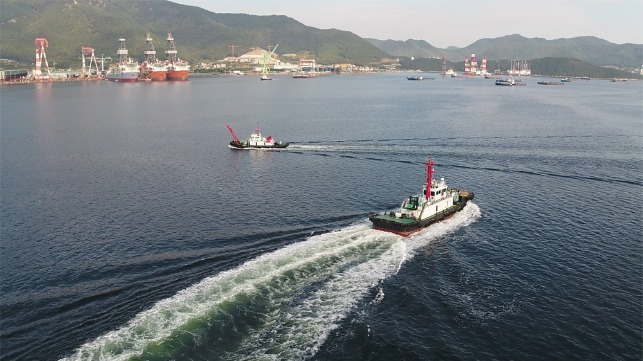Demonstration of Autonomous and Remote-Controlled Ship Operations

A test voyage conducted in Korea further demonstrated advancements in autonomous and remote-controlled ship operations. Using a 300-ton tug fitting with an autonomous navigation system, Samsung Heavy Industries was able to safely navigate the vessel from a remote operations center located more than 150 miles away from the port. The demonstration combined collision avoidance, autopilot, and remote control technologies.
The 125-foot tug operating at the Geoje Shipyard in Korea was outfitted with the Samsung Autonomous Ship technology. According to Samsung, SAS analyzes in real-time signals from navigational communication equipment, including radar, GPS, and AIS, to recognize nearby ships and obstacles. The system develops the route for the vessel, evaluating the risk of collision considering the ship's operating characteristics. It safely navigates the vessel to its destination by automatically controlling the propulsion and steering.
Operators at the remote control center installed at the Daejeon Marine Research Center were able to monitor the operations and guide the vessel with images combined with augmented reality (AR) technology. Among the tools they had was a 360-degree view around the ship that was made possible using LTE/5G mobile communication technology. At the land control center, they viewed the images on a large screen, monitoring the operation of the ship and demonstrating the technology to directly control the tug.
The vessel, the Samsung T-8 navigated in the harbor and returned safely to its destination about six miles away without the intervention of the crew. According to Samsung, the test, in particular, showed the collision avoidance technology that avoids other ships or obstacles that appear within a radius of one kilometer (approximately two-thirds of a mile) during operation.
Shim Yong-rae, head of Samsung Heavy Industries' shipbuilding and marine research institute, highlighted the system’s capability to reduce the crew’s burden by autonomously searching and operating the optimized route combined with artificial intelligence (AI) technology and high-speed communications.
Samsung plans to commercialize the SAS technology with a more advanced navigation assistance system by 2022.
Samsung supplied a brief video of the test:
